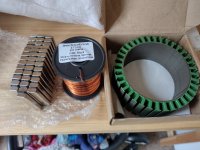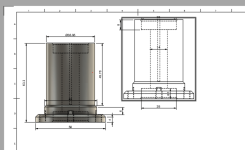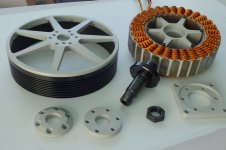Hi
mxlemming said:
I just ordered the ant innovation 12070.
Please please, when you get it, post some details about the 12070. Make a thread!
I've seen very similar "12070" motors also offered by freerchobby and a few alibaba vendors.
The form factor is imho excellent for ebike use!
But the specs from various vendors are all over the place. some quote 3.5A no-load current at 24V, some 7A at 15V,
Also, would be interesting to know how the stator is connected to the aluminium "base". Is it on aluminium "spokes" or on a cylinder?
(cylinder would be awesome because then it's "heatsinked" to it, and bolting the motor to an Al plate would further improve cooling)
Back to on topic, as you've briefly touched on LRK and dLRK, that's the only thing I can contribute (just so my post isn't completely off topic)
I've recently read 2 threads about dLRK vs LRK on rcgroups.com forum, some posts coming from Christian Lucas (the L in LRK).
I hope I can summarize the differences of dLRK over LRK well, but go read the posts from the man himself. (for the record, he did not invent the winding, just made it popular, but he understands motors really well. like REALLY well. He also tells the story. The threads are definitely worth a read!)
-> dLRK would have shorter coil ends (the useless part) for the same number of turns as LRK. This is especially significant for short motors, where the ends make up a higher percentage of the total wire length. If the motor is long, this is negligible
-> dLRK would have a "nicer" back EMF shape, from an ESC point of view compared to an equivalent LRK. Meaning modern ESCs have an easier time controlling a dLRK than a LRK wound motor.
-> LRK would have a little lower kV for the same number of turns than dLRK
Also, my 2 cents: a LRK wound stator, with its bulkier coil ends, will result in a tiny bit bulkier motor, all else being equal. If you're just rewinding, you might have difficulties to fit the rewound stator in the can

Regards,







